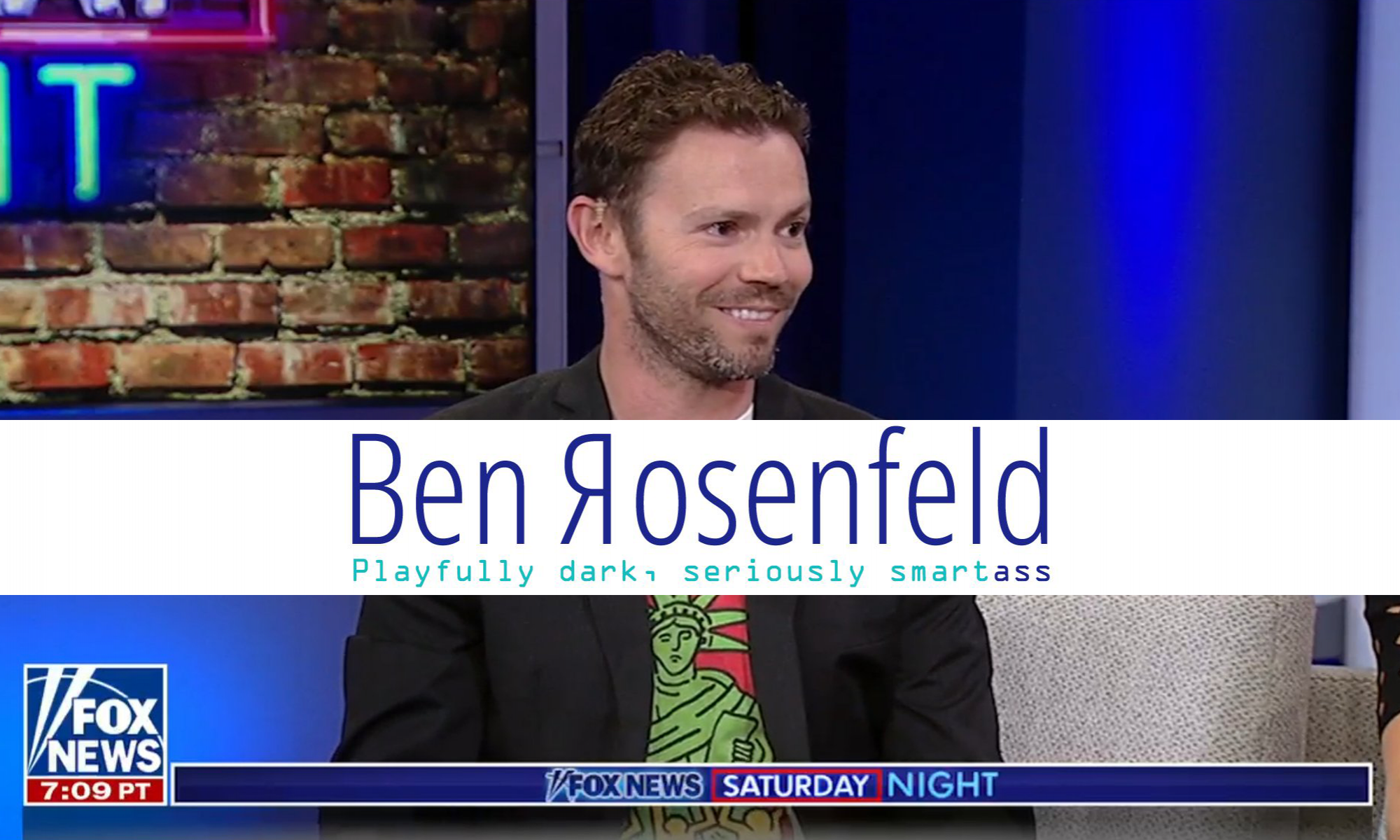I’ve self-released two comedy albums, Neuro Comedy (2012 – iTunes | Amazon ) and The Russian Optimist (2016 – iTunes | Amazon | Google Play). The second album hit as high as #5 on Amazon’s best selling comedy albums list and was later re-released by a major comedy label, New Wave / Comedy Dynamics. Having gone through this process twice, I’ve compiled what I know and what I recommend you do, broken into the three major components: Recording, Editing/Post-Production and Marketing.
1) RECORDING THE ALBUM
a) Select The Proper Venue
Unless you have a big following (i.e. over 10,000 tickets sold per year because they recognize your name – not because it’s a comedy show in their town), I recommend recording in a smaller venue that seats 50-100 people.You’re much better off having a sold out small room then a half empty large room. 40 people laughing in a small room doesn’t sound that different from 400 people laughing in a large theater space.It feels different when you’re on stage, for sure, but for the purposes of a recording it won’t matter much. In small audience venues, low ceilings are your friends; they keep the laughs bouncing and sounding louder.
I recommend finding a venue that has previously recorded comedy albums, and then listening to those albums, to see if you like the sound quality. If possible, avoid being the guinea pig.

b) Equipment/Setup
When recording, the more separate audio channels you can record, the better. At the minimum, you want to have your microphone and the audience laughter on two separate .wav tracks. Sometimes, if there’s multiple mics on the audience, you can get a separate audio track for each audience mic (which can be helpful to fix minor noise issues like waitress drink orders, etc. but will take more work in editing). Other times multiple audience mics get recorded as one track. Both options are fine, just know which one you’re doing.
If the venue has recorded albums before, they should know how to run the equipment through their sound board and computers, etc. If you’re setting it up yourself, at minimum you’ll want a sound recorder like the Zoom H4N which can interface with soundboards and offers 4 different input channels. If you do this yourself, make sure to test it all out in advance and make sure all the batteries are charged. Then make sure to have a backup system in place too, perhaps a video camera with external microphone. There’s nothing worse than having an amazing set only to find out there were technical issues. Have a friend to watch the equipment to make sure there’s no malfunctions. Or better yet – hire someone who knows what they’re doing. Watch out for background noise like loud air conditioners or heaters which can really mess up the sound quality.
c) Get an Audience
Publicity-wise, you have two options:
Option 1: Surprise!
Don’t tell the audience or anyone in advance, record your long set with a good microphone (Zoom H4N or something along those lines) and if the show goes great, chop it up into tracks and release it. If the show goes okay or worse, never mention that you were thinking of releasing it as an album.
The advantage of this method is, there’s no pressure. The downside is, there’s no pressure and no accountability, so if you’re not highly motivated, you may never get around to releasing it. You’d be surprised how motivating it is when people keep asking you “so when’s that album coming out?”
I did this method with my first album. I was 3.5 years into comedy, and had done 45+ minutes a handful of times with mixed results. Eventually one set went very well (or so I felt at the time) so I converted my HD video recording (I record all of my sets anyway just for my review) into an audio track and then chopped it up into an album.
I know some comedians have taken this idea a step further and recorded a bunch of short 8-10 minute sets and then combined it as a long album. I would avoid doing this because you need to know how your 45 minutes flows since that is how the people buying your album will experience it. It’s possible to kill for a bunch of short sets but not have the flow work when you put them back to back to back. Also, this method prevents you from doing callbacks to jokes and you’re less likely to get fun crowd work in there. If you decide to ignore my advice and go this route, at least record all the sets at the same venue so the sound is similar each time.
Option 2: Publicize!
Announce the event well in advance and publicize it as much as possible to get a big turnout.
The advantage is you’re more likely to have an audience on its best behavior and rooting for you to do well. The disadvantage is, you’ll feel some pressure. Although I think pressure is a good thing, as it helps you focus. I usually do one or two new jokes in most of my live performances, but when I announced my second album recording, all my shows six weeks prior to the recording were spent running chunks of the album material to make sure I had the proper order and the jokes I wanted on the album.
If you choose this publicity option, I highly recommend having two shows on the same night.
I did this for mysecond album. And I made it on my birthday to help increase turnout. The first show wound up nearly at capacity, but the second show was relatively light. I wound up using my first show’s audio for 90% of the album. But it was good knowing I had a second chance if I needed to say something more clearly or if I forgot a joke. I was also super relaxed during my first show because I knew I had a second chance to get it right. I didn’t know that the second show’s reservations were so light, or else I wouldn’t have been so relaxed. So my recommendation is: have two shows, go all out promoting them, but the night of the show, don’t ask about turnout for the second show, just focus on the first show.
EDITING/POST-PRODUCTION
Congrats you’ve recorded your album. Now comes the way less fun part – editing it.
At the very least you need to chop up your 40-60 minutes of comedy into 1-5 minute chunks and give each bit a clever title. You’ll also want to decide on the album title and design a cover. When designing a cover, remember that most music is digital and most music displays in 150×150 pixel thumbnails, so make your design simple with the largest fonts possible.

You may also want to do things like balance mic levels, enhance laughs in select places or cut out bits that didn’t work that night.
If you know audio editing, you can do it yourself, otherwise be ready to pay someone to do it for you. Make sure to listen to the output a few times and give notes for changes that are needed. Once you think it’s ready, have a few trusted friends listen to it and see if they notice any issues aka do “quality control.”
Once you’ve completed the actual editing and your friends haven’t found any glaring problems, create an artist account on CDBaby.com (or some other distributor, I’ve only used CDBaby and am happy with them), upload your tracks, artwork and other info they require. Then set a release date and pay them their fee (in the $75-$150 range). Make the release date at least a month (maybe 2-3 months) from now so that you have time for…
MARKETING
This is the toughest part for me, and I think for most creative minded people. I like creating things, I don’t like promoting them. But you owe it to your work to get it in front of as many potential people as possible.
Keep in mind, one of the toughest parts of self-releasing is that the big boys are very unlikely to help you with marketing. So you need a plan and the time to execute it. While CDBaby places you on iTunes and Spotify and every other digital music platform, if you’re self-published don’t expect to get on the front pages of iTunes or any other extra push.
Pitch blogs! Getting write-ups is huge. Forget TV or the NYTimes. Find your niches. Also start with less popular blogs and work your way up the media food chain (read this book for a better step by step explanation). Most blogs will link directly to your album, so if someone likes the writeup, they can buy it in two clicks. This “quick to purchase” path is way better than any TV show or print magazine can do. (But yes, it’s still nice to get mainstream media coverage.) I recommend using BuzzSumo.com to search for artists who are similar to you and who recently released albums (Buzzsumo has a free 7 day trial). Then individually email every blogger who wrote about that album with your pitch and a link to a free download of your album so they can write about it if they choose. Once you start getting write ups, hyperlink to them in your future pitches.
Sample pitch email: “Hi John Blogger, I noticed you recently wrote about Jane Smith’s new comedy album and thought you might be interested in covering my new album (release date: in two weeks). Here’s the free download (for your review only). I’ve already been covered by James Blogger (link). Please let me know if you have any questions. Best, Your Name”
Mailing list and social media: A couple weeks before the release date, email your list with the announcement and pre-buy link. Then do it again the day of the release. That’s it. Don’t bother them too much. Same thing with social media. Make some pretty memes with jokes from the album too.
Do you have any questions I didn’t answer? Have you released an album and completely disagree with my thoughts? Leave a comment below and I’ll respond.
Need help with self-producing your album? Contact me for a one-on-one private consulting session.


SPECTACULAR ARTICLE BEN‼️ LOUD
Thank you for publishing this article. This is great advice from a Great Comedian. You are the best.
Great article! Great specific advice. Thanks!